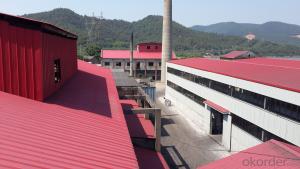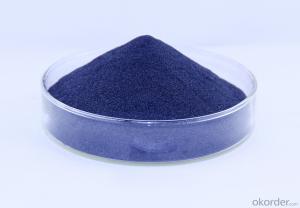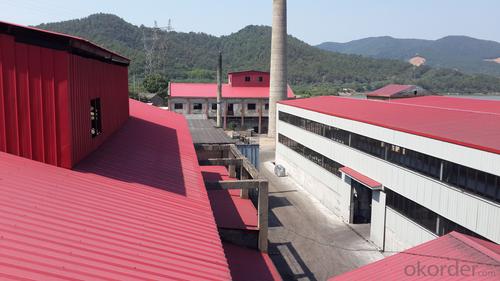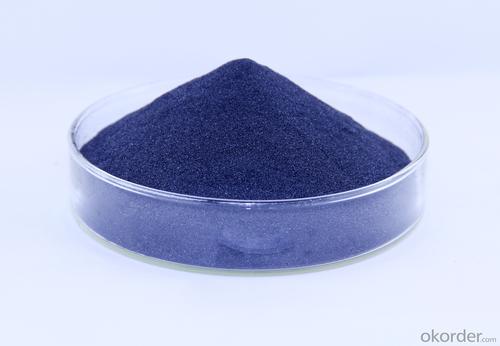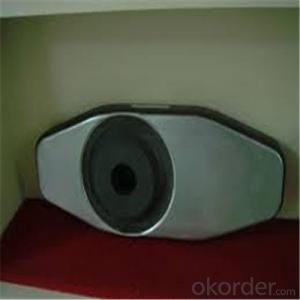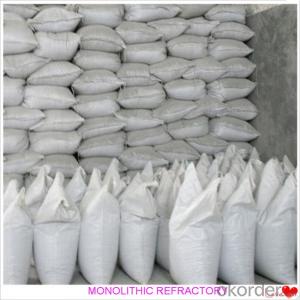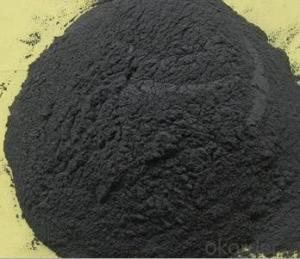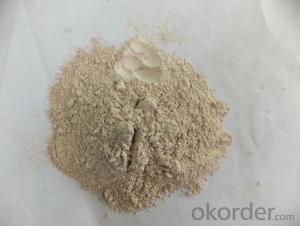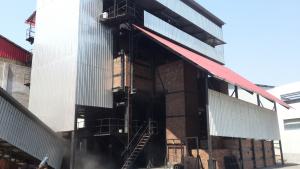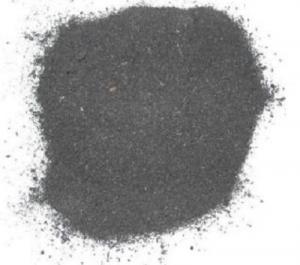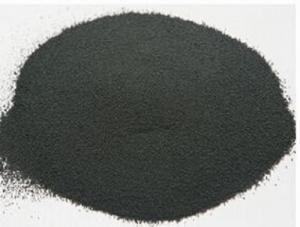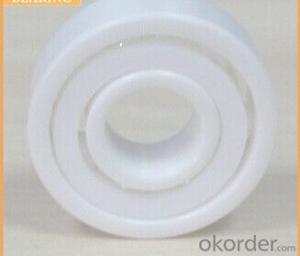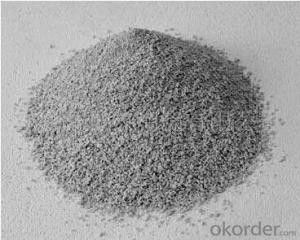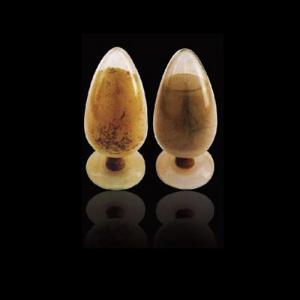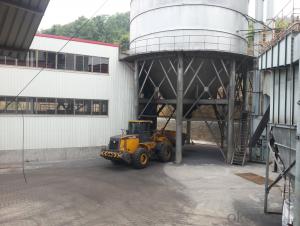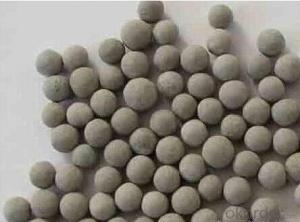Monolithic Refractories for Iron and Steel Industry - Raw Carbon Material Made by Carbon Filler
- Loading Port:
- China main port
- Payment Terms:
- TT or LC
- Min Order Qty:
- 20 m.t
- Supply Capability:
- 1000 m.t/month
OKorder Service Pledge
OKorder Financial Service
You Might Also Like
Calcined Petroleum Coke
FC:98.5%min,
S:0.5%max
A:0.8%max
V:0.7%max
Mositure:0.5%max
Size:1-5mm
Technology:
Laborary Equpment
In our lab,we has a high precision balance,mullfe furnace,sample making machine, dring box,sulfur measurement instrument and other calibratiing equipments.As a result,before deliverung to our customers,our products have to pass a strict test to ensure the quality and components.The testing reports will be sent to our customers to confirm untill they satisfy with it.
Packaging & Delivery
Packaging Detail:25kg paper bag into 1t weaving bag 5kg, 10kg and 20kg weaving bag into 1t weaving bag 25kg weaving bag put on pallet covered with entanglement wrap product direct into packing bag 25kg paper bag put on pallet covered with entanglement Wrap 25kg weaving bag into 1t weaving bag.
Delivery Details: 7 days
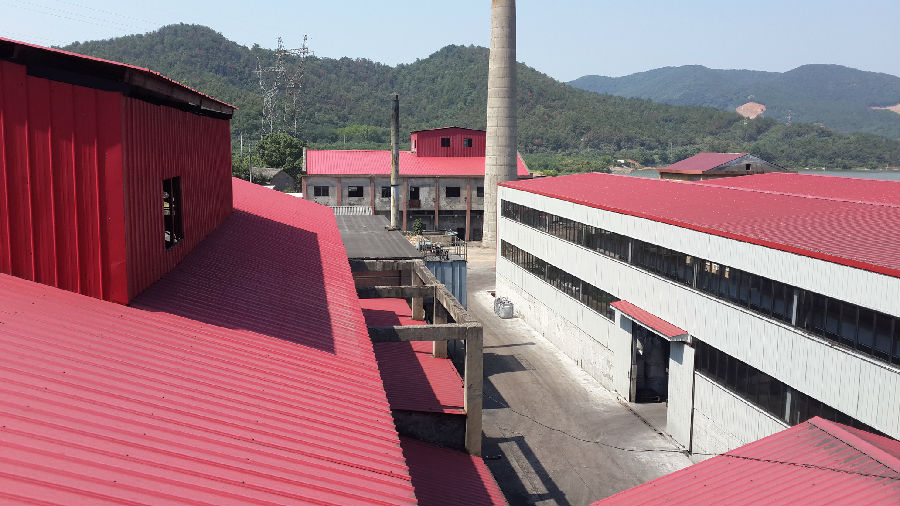
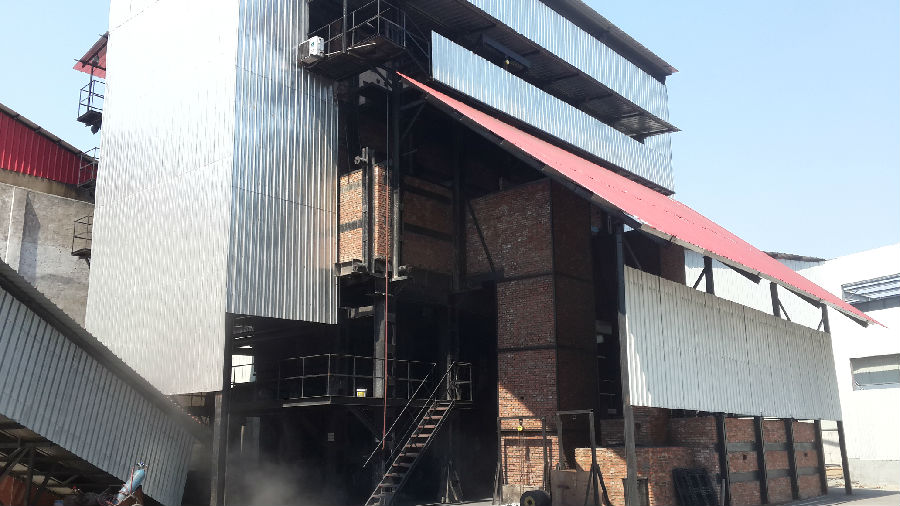
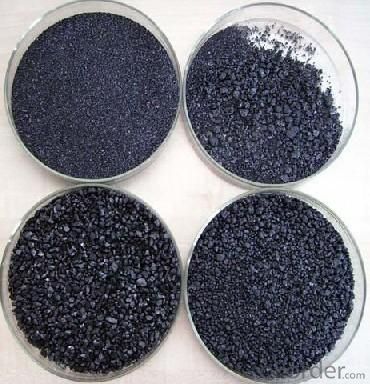
Factory Background
The factory is majorly running and operating carbon additive (pitch coke, calcined petroleum coke and anthracite), low nitrogen carbon additive, and brake pad making material. Company is the long term supplier of Sinosteel Corporation, Shanghai Carbon Corporation, the plant of SGL Group the Carbon Company in China and some largest special carbon products producing plants.
YUAI also supplies huge amout of high quality carbon additive and graphite carbon additive to steel plants, foundries and ferrotungsten plants. YUAI has been assigned by BAO STEEL as the only organization for processing pitch coke for export purpose. The group’s major products are constantly exported to Japan, Korea, Malaysia, South East Asia countries, Europe and America, which receive praises by our consumers.
The group has invested numbers of calcinators in Anhui China to ensure the capability of producing and processing huge amount of carbon additive. Further investment is on process. According to the orders from customers, YUAI is able to processing and providing different specifications of carbon additive and other products. To provide best quality of products and to offer customers most satisfied service is YUAI’s operating objectives.
Our Service:
1. Your inquiry related to our products or prices will be replied in 24hours.
2. Manufacturer with large capacity, ensure the fast production cycle after confirmed the order.
3. Our professional technicians will answer your entire enquiry in patient.
4. To meet the refractory solutions, we can serve as your instructions.
5. Protection of sales area and private information for our entire customer.
If you’ve kind enquiries, please don’t hesitate to let us know. ^_^
- Q: What are the common manufacturing processes used for monolithic refractories?
- The common manufacturing processes used for monolithic refractories include: 1. Mixing: The first step in the manufacturing process is the proper mixing of the raw materials. This involves carefully measuring and combining the different ingredients to ensure a homogeneous mixture. 2. Wetting: Once the ingredients are mixed, water or a liquid binder is added to wet the mixture. This helps in improving the workability and plasticity of the material, making it easier to shape and mold. 3. Forming: The wet mixture is then shaped into the desired form using various techniques such as casting, gunning, ramming, or extrusion. Casting involves pouring the wet mixture into a mold and allowing it to solidify, while gunning uses a spray gun to apply the material onto a surface. Ramming involves compacting the wet mixture into a mold using a ramming tool, and extrusion involves forcing the wet mixture through a die to create specific shapes. 4. Drying: After forming, the shaped monolithic refractory is dried to remove any excess moisture. This is typically done in a controlled environment with specific temperature and humidity conditions to prevent cracking or warping. 5. Firing: Once dried, the monolithic refractory is fired at high temperatures to achieve its desired properties. This process, known as sintering, helps in bonding the particles together and increasing the strength and stability of the material. 6. Finishing: After firing, the monolithic refractory may undergo additional finishing processes such as grinding, polishing, or coating to improve its surface quality and enhance its performance. These common manufacturing processes ensure the production of high-quality monolithic refractories with consistent properties and performance characteristics.
- Q: How do monolithic refractories contribute to the overall efficiency of ladle transfer processes?
- Monolithic refractories contribute to the overall efficiency of ladle transfer processes by providing excellent thermal insulation and resistance to high temperatures, which helps in maintaining the heat of the molten metal during transfer. They also have high mechanical strength and erosion resistance, ensuring longer service life and reduced downtime for repairs. Additionally, monolithic refractories offer easy installation and can be shaped to fit the ladle's specific geometry, minimizing heat loss and ensuring a more efficient transfer process.
- Q: How do monolithic refractories impact the quality and performance of iron and steel products?
- Monolithic refractories play a crucial role in ensuring the quality and performance of iron and steel products. These refractories are specifically designed to withstand extremely high temperatures and harsh conditions, making them an essential component in various applications within the iron and steel industry. Firstly, monolithic refractories contribute to the overall quality of iron and steel products by providing excellent thermal insulation. They help to maintain a consistent and controlled temperature environment in the manufacturing process. This is particularly important in blast furnaces, where temperatures can reach up to 2,000 degrees Celsius. By effectively insulating the furnace walls, monolithic refractories help to minimize heat loss and ensure efficient energy utilization. This ultimately leads to higher-quality products with improved mechanical properties. Secondly, monolithic refractories offer superior resistance to chemical and physical wear. In the steelmaking process, molten metal and slag can be highly corrosive, causing erosion and degradation of the refractory lining. Monolithic refractories are specifically engineered to withstand these aggressive environments, providing excellent resistance to chemical attack and mechanical stress. By maintaining the integrity of the lining, they prevent contamination and prolong the lifespan of the furnace or ladle, ultimately enhancing the quality of the final iron and steel products. Furthermore, monolithic refractories enable greater design flexibility and ease of installation. Unlike traditional refractory bricks, which require meticulous placement and fitting, monolithic refractories can be applied as a single, cohesive material. This allows for more complex shapes and structures, resulting in optimized furnace design and improved thermal efficiency. Additionally, the ease of installation reduces downtime during maintenance and repairs, ensuring continuous production and minimizing disruptions to the production process. Overall, monolithic refractories significantly impact the quality and performance of iron and steel products. They provide excellent thermal insulation, resist chemical and physical wear, and offer greater design flexibility. By ensuring consistent and controlled temperature environments, preventing contamination, and enabling efficient production processes, monolithic refractories contribute to the production of high-quality iron and steel products that meet the stringent requirements of various industries.
- Q: How do monolithic refractories improve the efficiency of ladle and tundish preheating furnaces?
- Monolithic refractories greatly contribute to the efficiency of ladle and tundish preheating furnaces. These refractories, made from a single material, are easily installed, repaired, and replaced, making them versatile and cost-effective. The efficiency of these furnaces is improved thanks to the outstanding thermal insulation properties of monolithic refractories. With low thermal conductivity, they effectively retain heat and prevent its escape. This insulation capability ensures an efficient preheating process, reducing energy consumption and costs by minimizing heat loss. Additionally, monolithic refractories possess high thermal shock resistance, which is crucial in ladle and tundish preheating furnaces. These furnaces experience rapid temperature changes during the pouring of molten metal, which can lead to cracking or failure of traditional refractories. However, monolithic refractories are specifically designed to withstand thermal shock, remaining intact and maintaining their insulating properties even in extreme conditions. This durability reduces downtime and maintenance requirements, thus enhancing overall efficiency. Furthermore, monolithic refractories provide a seamless and uniform lining surface, improving heat transfer within the furnace. The absence of joints or seams reduces the risk of heat leakage and ensures even distribution of heat throughout the lining. This promotes uniform heating of the ladle or tundish, allowing for more efficient preheating and better temperature control. In conclusion, the use of monolithic refractories in ladle and tundish preheating furnaces results in improved efficiency due to their exceptional thermal insulation properties, high thermal shock resistance, and ability to provide a seamless and uniform lining. These refractories minimize heat loss, reduce energy consumption, and enhance the overall performance of the preheating process.
- Q: What are the factors affecting the thermal expansion of monolithic refractories?
- The thermal expansion of monolithic refractories is influenced by several factors. These factors include the chemical composition of the refractory material, particle size, temperature, thermal history, porosity, binder content, and thermal shock. 1. The thermal expansion of the refractory material is significantly influenced by its chemical composition. Different chemical elements and compounds have varying coefficients of thermal expansion. For instance, materials with high levels of silica generally have lower coefficients of thermal expansion compared to those with higher concentrations of alumina. 2. The particle size distribution of the refractory material can also impact its thermal expansion. Smaller particle sizes result in higher thermal expansion due to increased surface area and greater particle contact. 3. The temperature at which the monolithic refractory is exposed plays a crucial role in its thermal expansion. As the temperature increases, the particles gain more kinetic energy, leading to increased movement and expansion. Different refractory materials exhibit significant expansion within specific temperature ranges. 4. The thermal history of the refractory material, including its heating and cooling cycles, can influence its thermal expansion behavior. Repeated heating and cooling cycles can induce microstructural changes in the material, affecting its thermal expansion properties. 5. The porosity of the monolithic refractory also affects its thermal expansion. Higher porosity generally results in higher thermal expansion due to the presence of voids and gaps within the material. 6. The type and amount of binder used in monolithic refractories impact their thermal expansion. Different binders have different coefficients of thermal expansion, which can influence the overall expansion behavior of the material. 7. Rapid temperature changes, such as quenching or exposure to alternating heating and cooling, can cause thermal shock in the refractory material. This can lead to cracks, spalling, and changes in thermal expansion behavior. Understanding these factors is essential when selecting the appropriate monolithic refractory material for specific applications. The thermal expansion characteristics directly affect the performance and longevity of the refractory in high-temperature environments.
- Q: How do monolithic refractories contribute to the reduction of downtime in iron and steel plants?
- Monolithic refractories contribute to the reduction of downtime in iron and steel plants by providing superior thermal insulation and resistance to high temperatures, reducing the risk of equipment failure and unplanned shutdowns. Their ability to withstand extreme conditions, such as molten metal and slag, allows for extended operational periods without frequent maintenance or replacement. Additionally, monolithic refractories offer quick and easy installation, repair, and maintenance, minimizing the time required for downtime and ensuring a more efficient and productive operation in iron and steel plants.
- Q: How do monolithic refractories resist corrosion and erosion in iron and steel applications?
- Monolithic refractories resist corrosion and erosion in iron and steel applications through several mechanisms. Firstly, their high-density composition and low porosity make them less susceptible to chemical attack and penetration by corrosive agents. Secondly, their high thermal conductivity ensures efficient heat transfer, minimizing the formation of localized hotspots that can accelerate corrosion. Additionally, monolithic refractories are often designed with specific additives and bonding agents that enhance their resistance to chemical reactions and erosion caused by molten metals and slag. Overall, their robust structure and tailored formulation make monolithic refractories highly effective in withstanding the harsh conditions of iron and steel applications.
- Q: What are the key properties of patching mixes used for monolithic refractory repairs?
- The key properties required for patching mixes used in the repair of monolithic refractories include: 1. High temperature resistance: The patching mixes should have the ability to withstand high temperatures without compromising their structural integrity. They must be capable of enduring temperatures ranging from 2000 to 3000 degrees Fahrenheit. 2. Chemical resistance: These patching mixes should be resistant to chemical reactions that occur in the presence of molten metals, slag, or other corrosive substances. They should not deteriorate or react with these materials, ensuring the longevity of the repaired refractory. 3. Thermal shock resistance: The patching mixes must have the ability to withstand sudden and extreme temperature changes without cracking or spalling. Refractory linings are often subjected to intense thermal cycling, and the patching material should be able to endure these conditions without failure. 4. Adhesion: The patching mixes should possess excellent adhesion properties to create a strong bond with the existing refractory material. This is crucial to prevent any separation or detachment of the patching material, which could result in further damage or failure. 5. Workability: The patching mixes should have good workability, allowing for easy and efficient application. They should be easily moldable and capable of effectively filling cracks, gaps, or damaged areas. 6. Setting and curing time: The patching mixes should have a reasonable setting and curing time. They should be able to harden quickly to minimize downtime during repairs, while also providing sufficient time for proper application and shaping. 7. Density and porosity: The patching material should have an appropriate density and porosity to resist penetration by molten metal or slag. Low porosity ensures that the repaired refractory maintains its thermal insulation properties. 8. Mechanical strength: The patching mixes should exhibit adequate mechanical strength to withstand physical stresses, such as abrasion or impact, that may occur during operation. 9. Compatibility: It is important that the patching mixes are compatible with the existing refractory material to ensure a seamless integration and prevent any potential chemical reactions or incompatibilities that could compromise the repair. By considering these key properties, patching mixes used for monolithic refractory repairs can effectively restore the integrity and performance of refractory linings, prolonging their lifespan and ensuring efficient and safe operation in high-temperature environments.
- Q: How are monolithic refractories installed and repaired in iron and steel production facilities?
- Monolithic refractories are vital components in iron and steel production facilities, as they provide insulation and protection against high temperatures, chemical corrosion, and mechanical wear. The installation and repair processes for monolithic refractories in these facilities require careful planning, expertise, and adherence to safety protocols. When installing monolithic refractories, the first step is to prepare the surface by removing any loose material and cleaning the area thoroughly. This ensures proper adhesion of the refractory material. The surface may also need to be roughened or textured to improve bonding. Next, the monolithic refractory material is mixed with water or a binder to create a workable consistency. It is then applied to the prepared surface using various methods such as casting, gunning, ramming, or troweling. The choice of application method depends on factors such as the type of refractory material, the area being repaired, and the desired outcome. During installation, it is essential to carefully follow the manufacturer's instructions regarding mixing ratios, curing times, and drying temperatures. Improper installation can lead to reduced refractory performance, premature failure, and safety hazards. Repairing monolithic refractories in iron and steel production facilities is an ongoing process due to the harsh operating conditions and mechanical stresses they endure. When a refractory lining shows signs of damage or wear, it is crucial to address the issue promptly to prevent further deterioration. The first step in repairing monolithic refractories is to assess the extent of the damage. This can be done through visual inspection, thermal imaging, or non-destructive testing techniques. Once the damage is identified, the repair method can be determined. Minor repairs can often be carried out using patching materials. These materials are typically the same or similar to the original refractory composition and are mixed with water or a binder to form a paste. The paste is then applied to the damaged area and allowed to cure. For more extensive repairs, the damaged refractory material may need to be removed entirely. This can be done through mechanical methods such as chipping, grinding, or cutting. After the damaged material is removed, the surface is prepared as mentioned earlier, and new refractory material is installed using the appropriate application method. It is important to note that the repair process should be conducted by trained personnel with expertise in refractory installation and repair. Safety precautions such as wearing protective clothing, using proper tools, and following established procedures should always be observed. In conclusion, the installation and repair of monolithic refractories in iron and steel production facilities require careful planning, adherence to manufacturer's instructions, and expertise in refractory materials. By following proper procedures and promptly addressing any damage, these facilities can ensure the longevity and efficiency of their refractory linings, ultimately contributing to the smooth operation of their production processes.
- Q: How do monolithic refractories perform in torpedo ladle applications?
- Monolithic refractories perform exceptionally well in torpedo ladle applications due to their high thermal shock resistance, excellent erosion and corrosion resistance, and superior mechanical strength. They can withstand the extreme temperatures and aggressive molten metal environment inside the torpedo ladle, ensuring long-lasting and reliable performance. Additionally, monolithic refractories offer ease of installation and maintenance, making them a preferred choice in torpedo ladle applications.
Send your message to us
Monolithic Refractories for Iron and Steel Industry - Raw Carbon Material Made by Carbon Filler
- Loading Port:
- China main port
- Payment Terms:
- TT or LC
- Min Order Qty:
- 20 m.t
- Supply Capability:
- 1000 m.t/month
OKorder Service Pledge
OKorder Financial Service
Similar products
Hot products
Hot Searches
Related keywords
